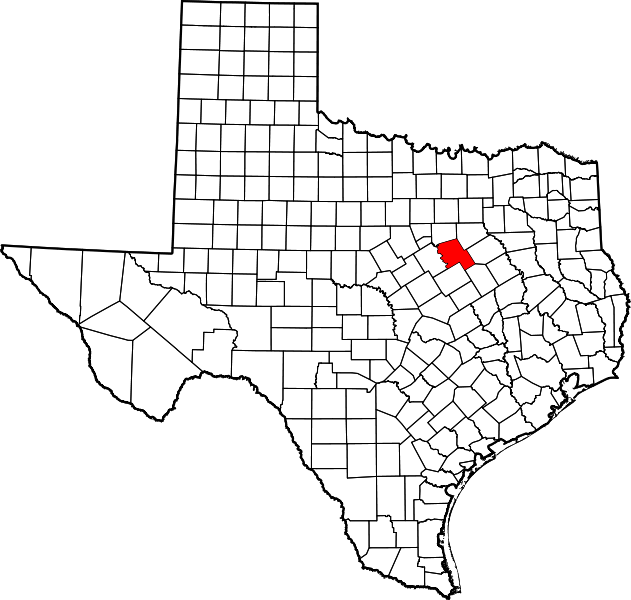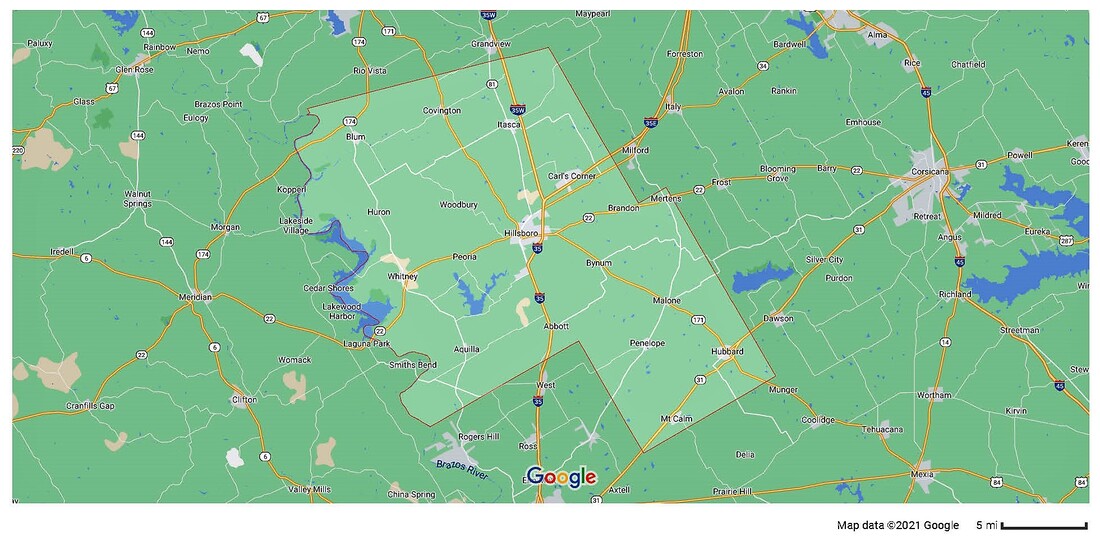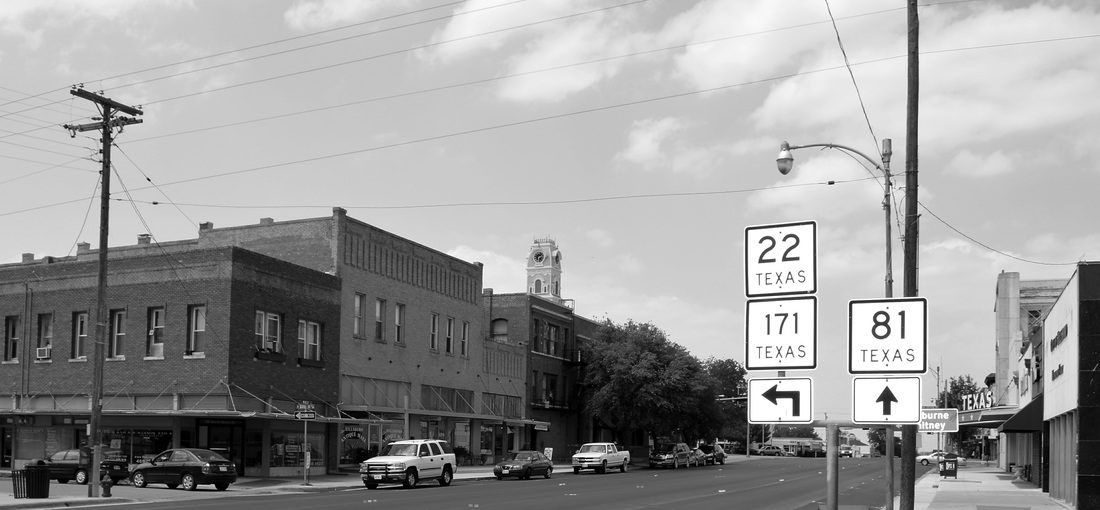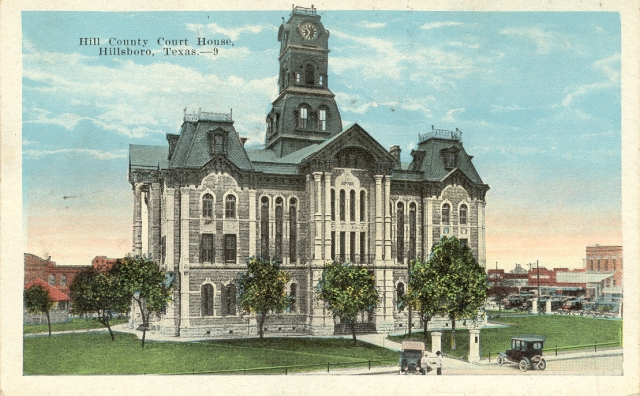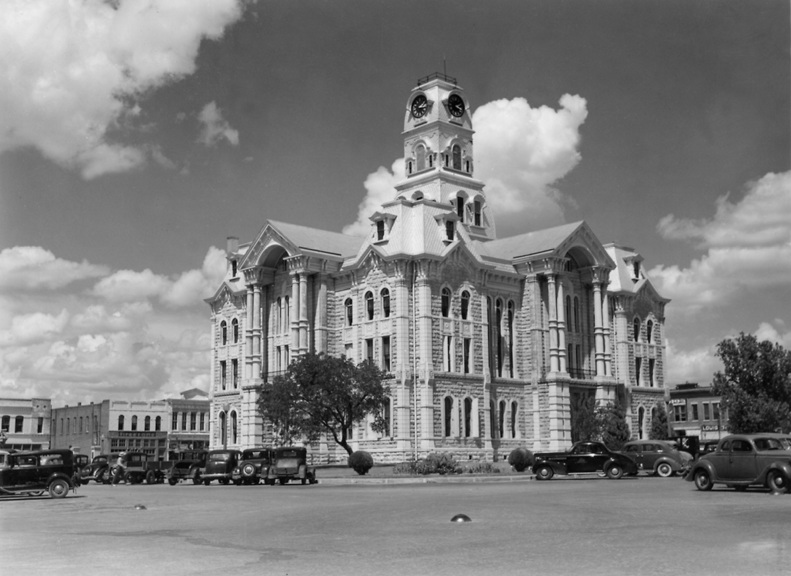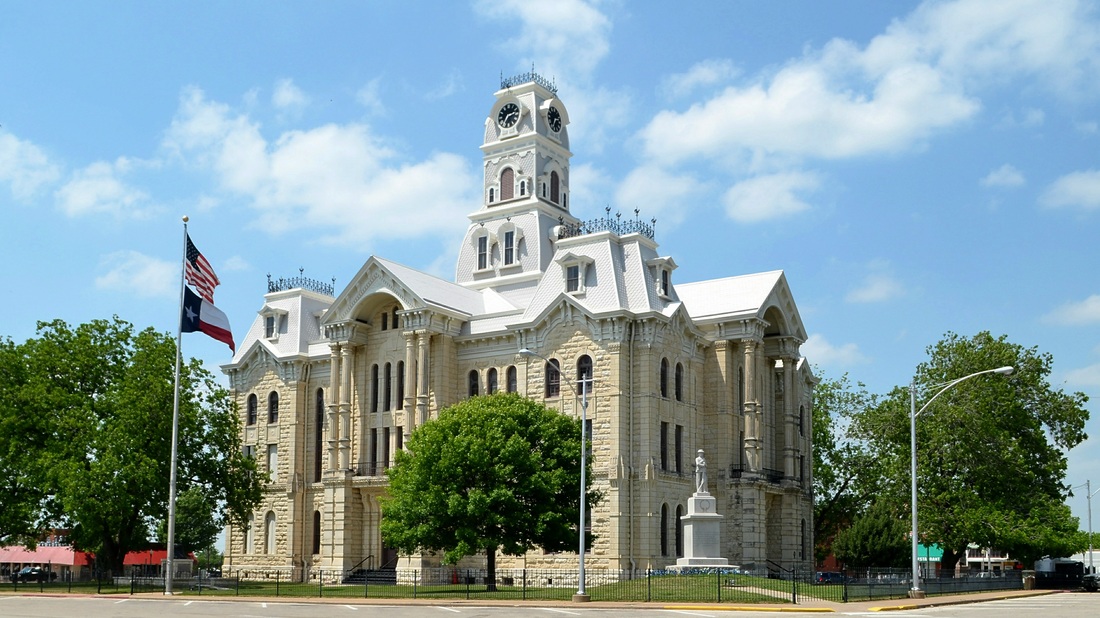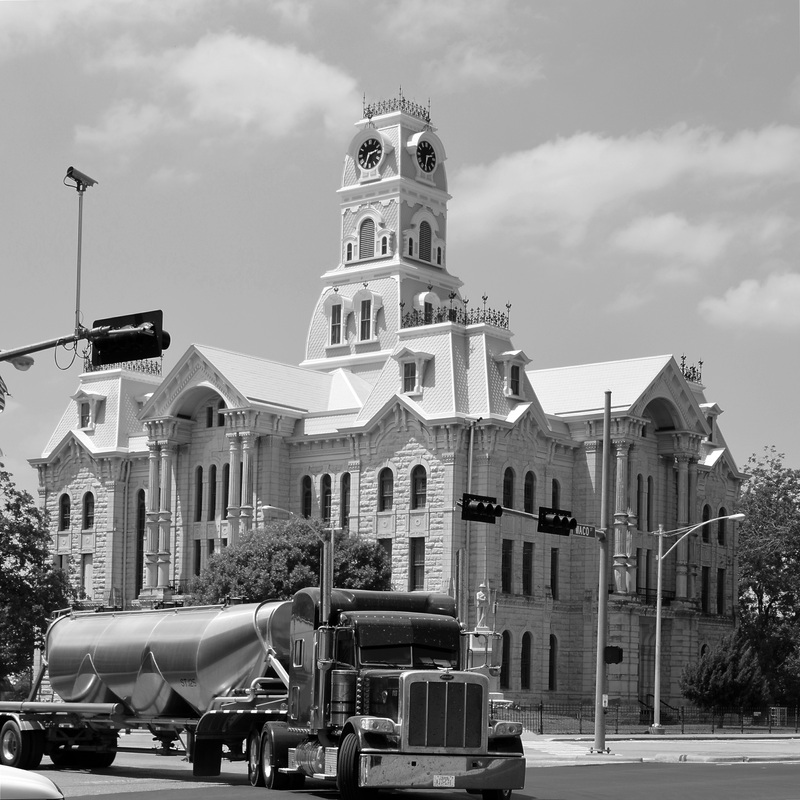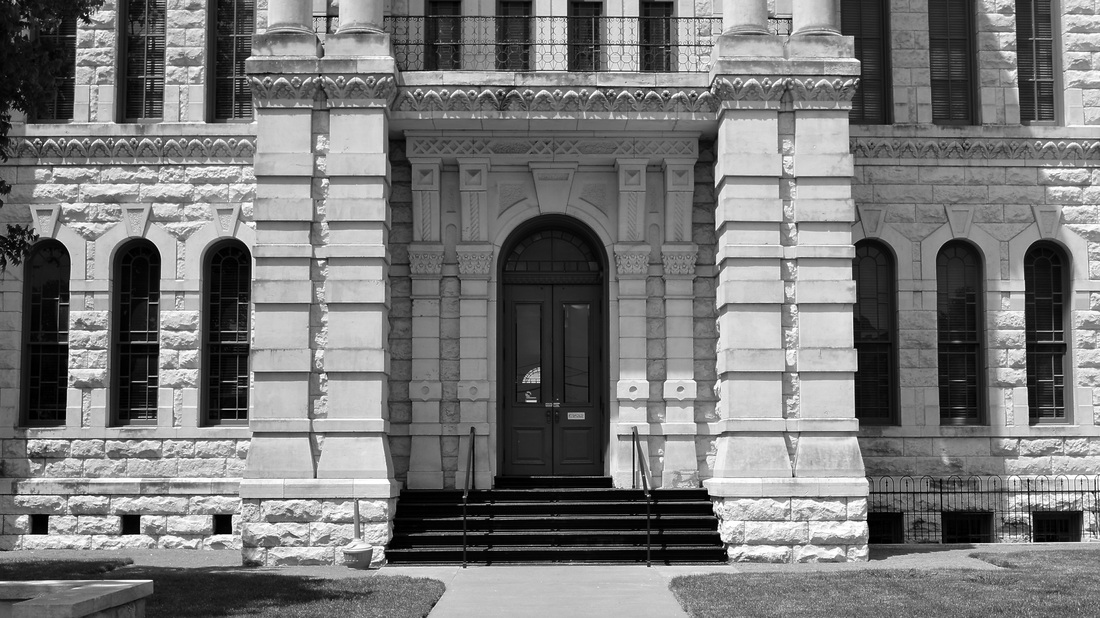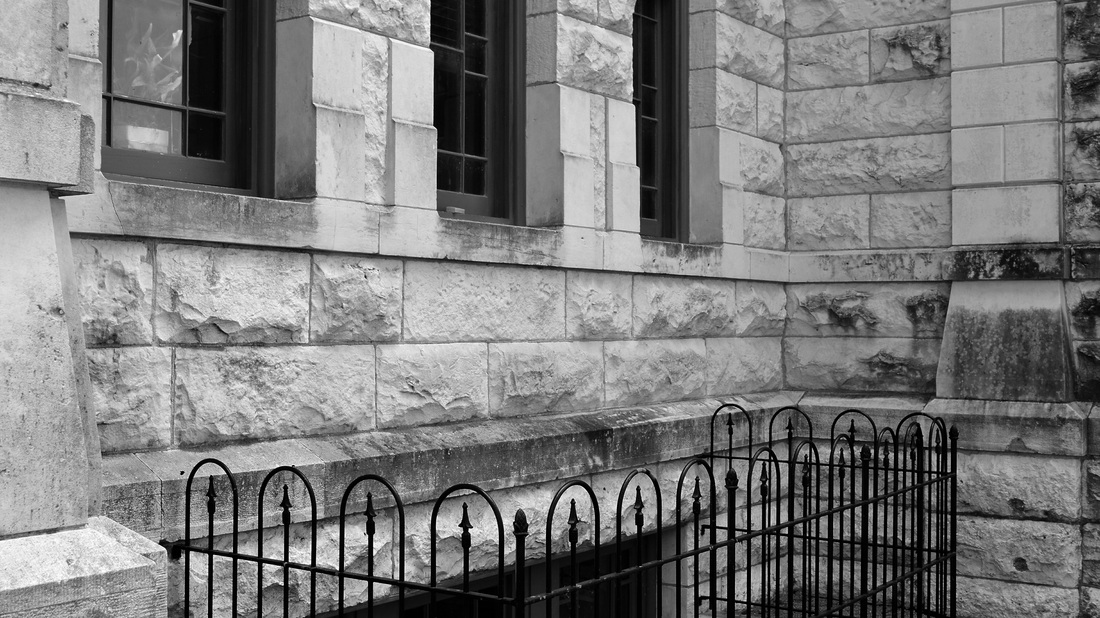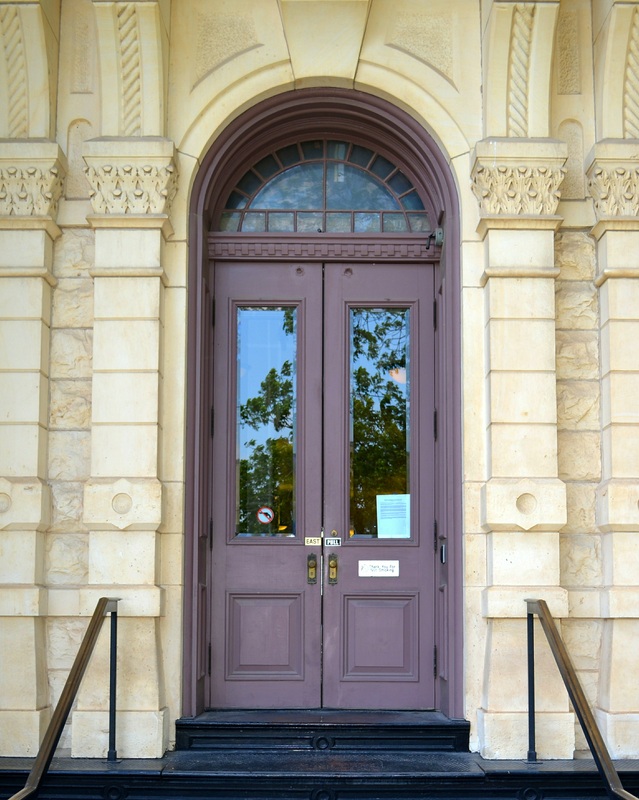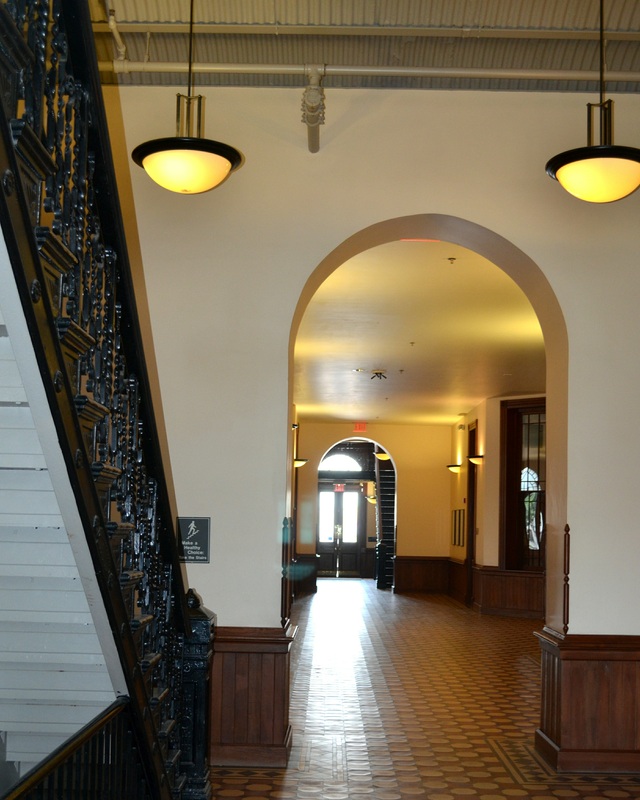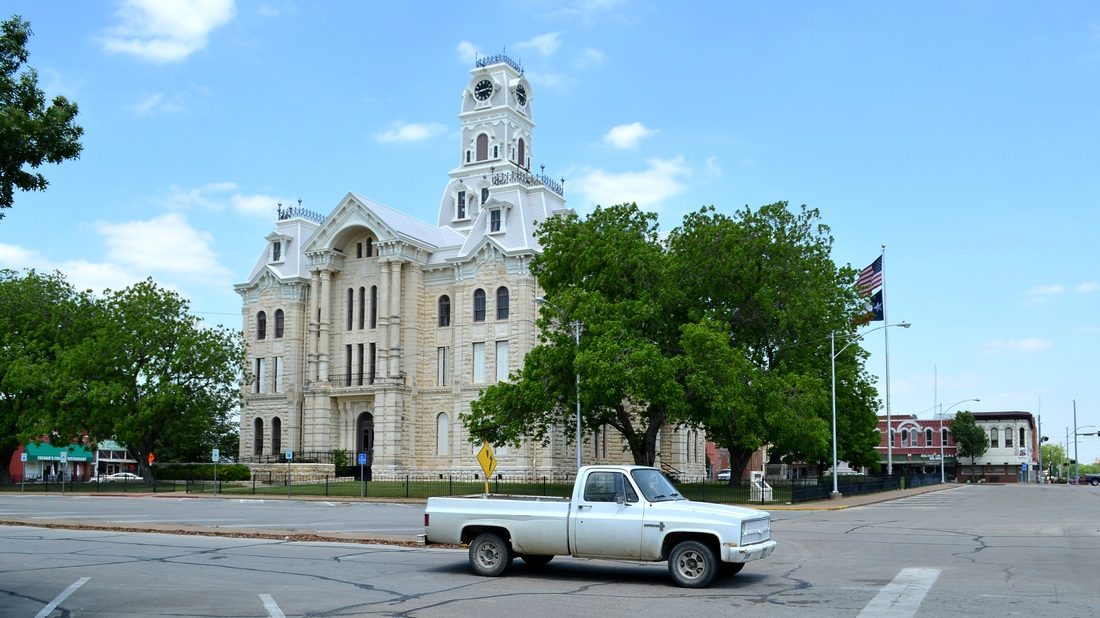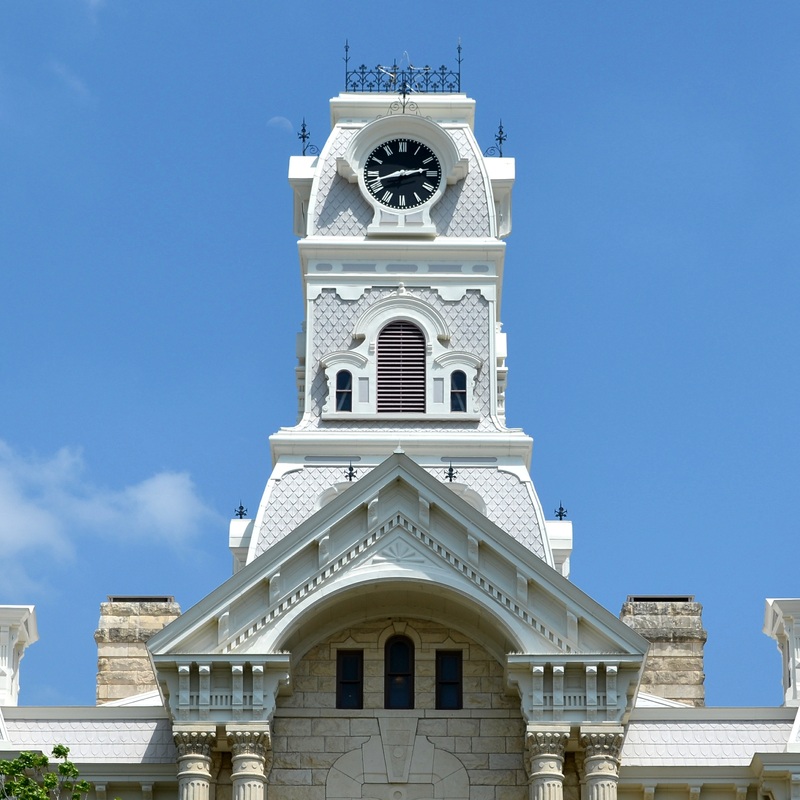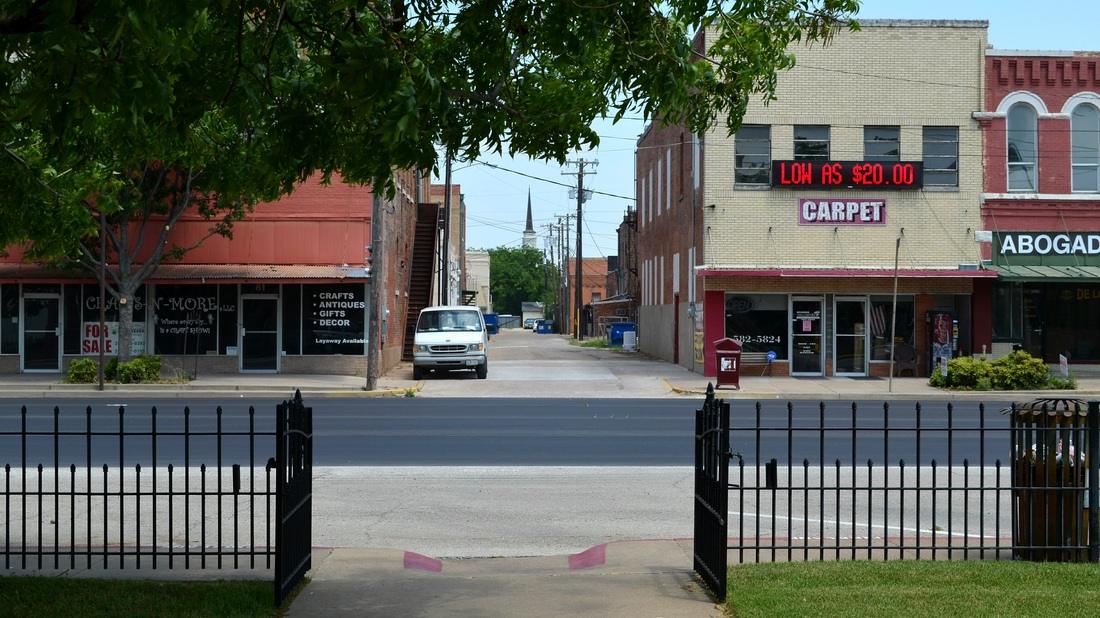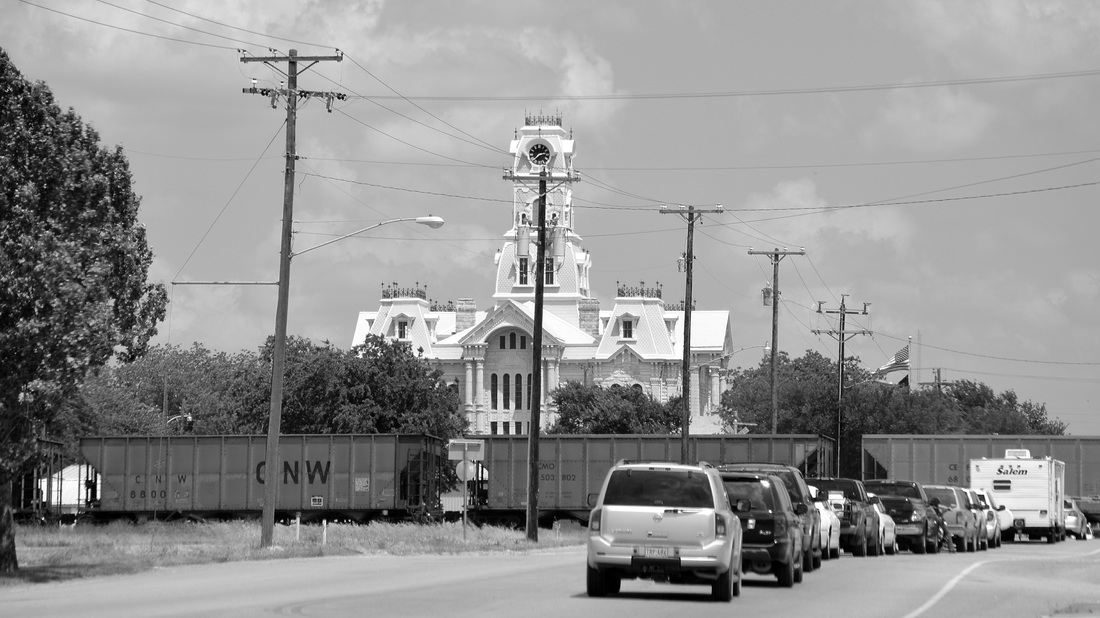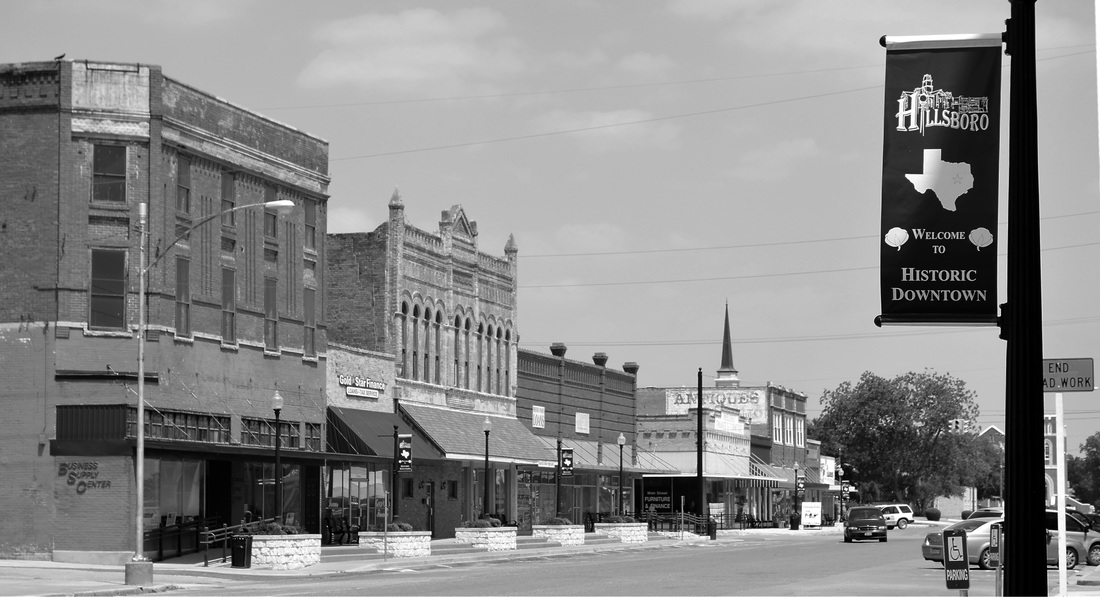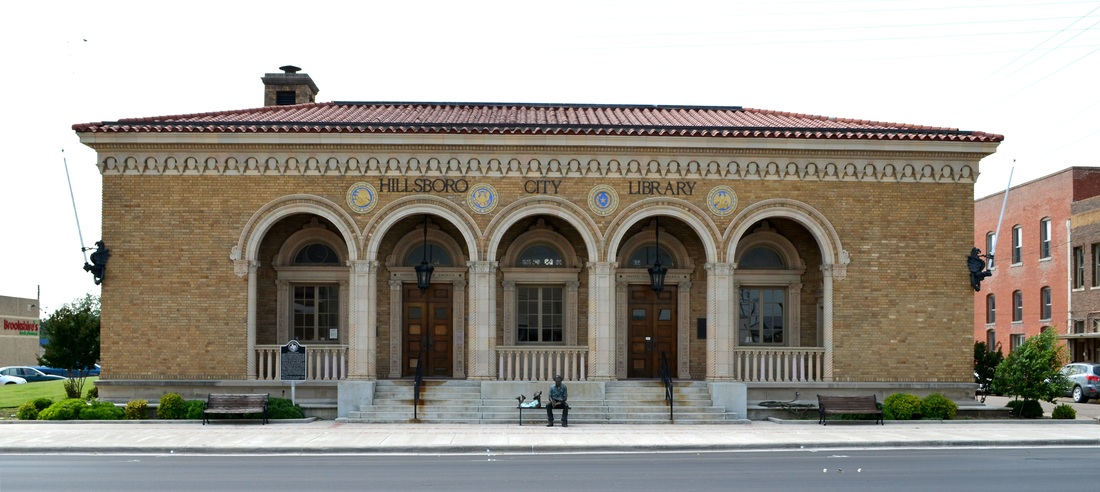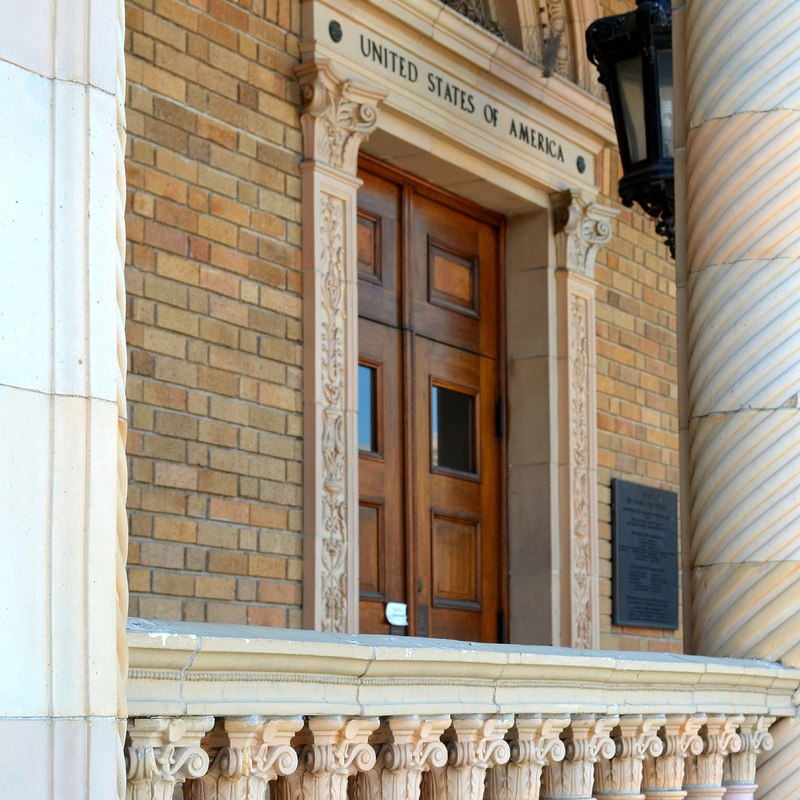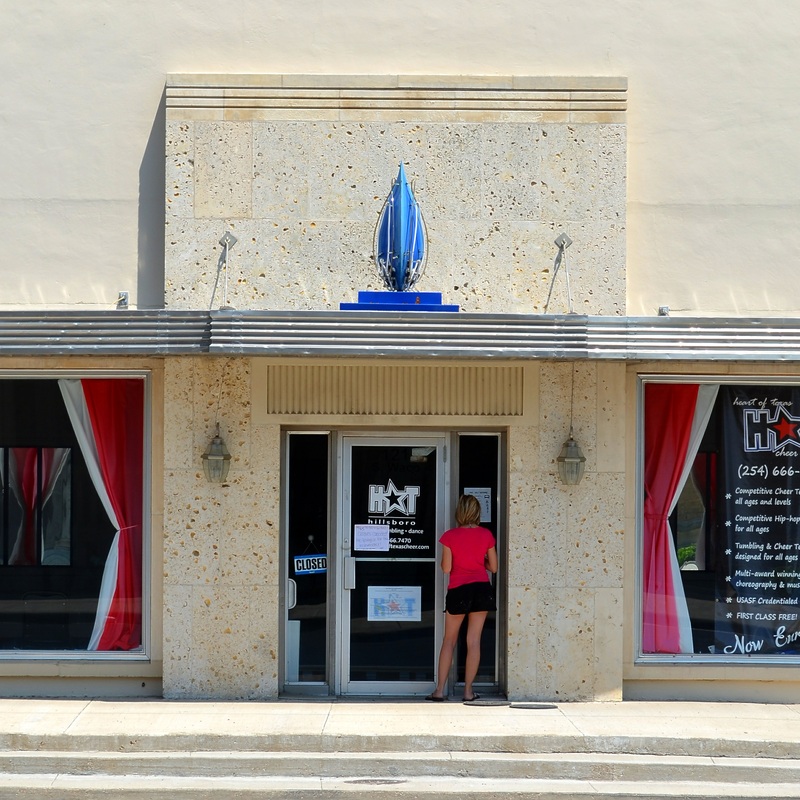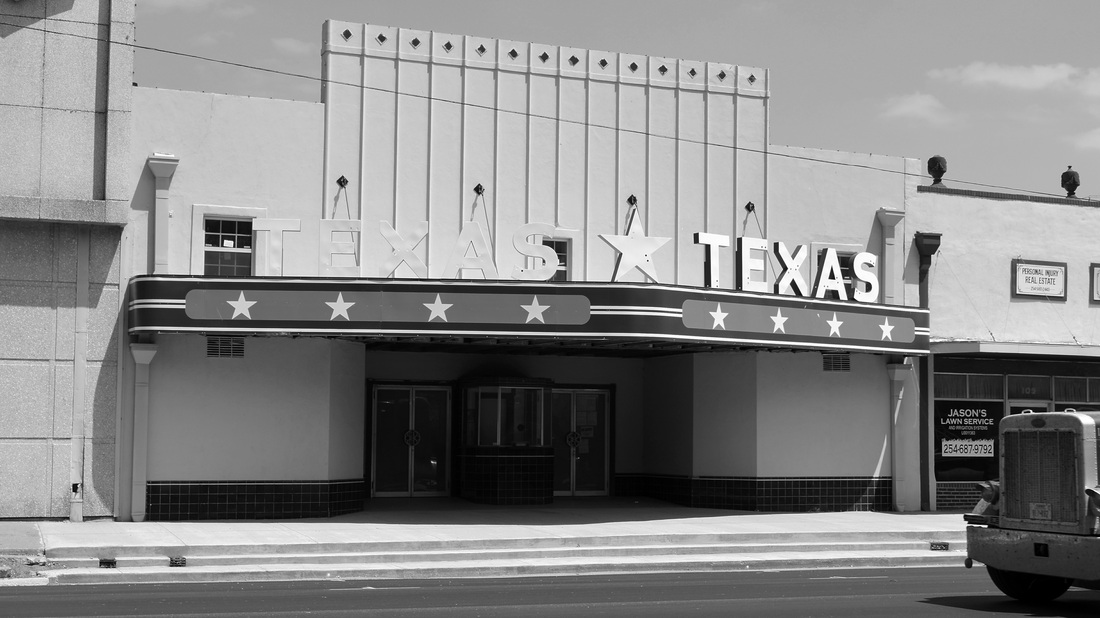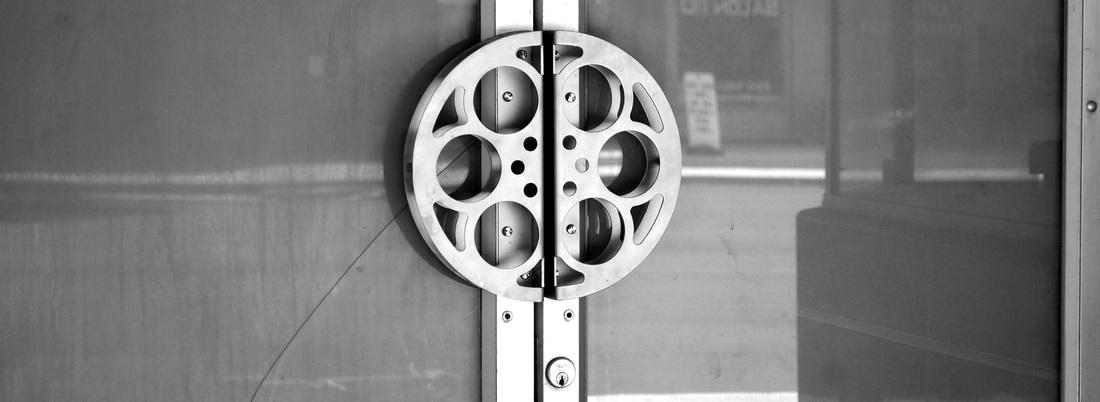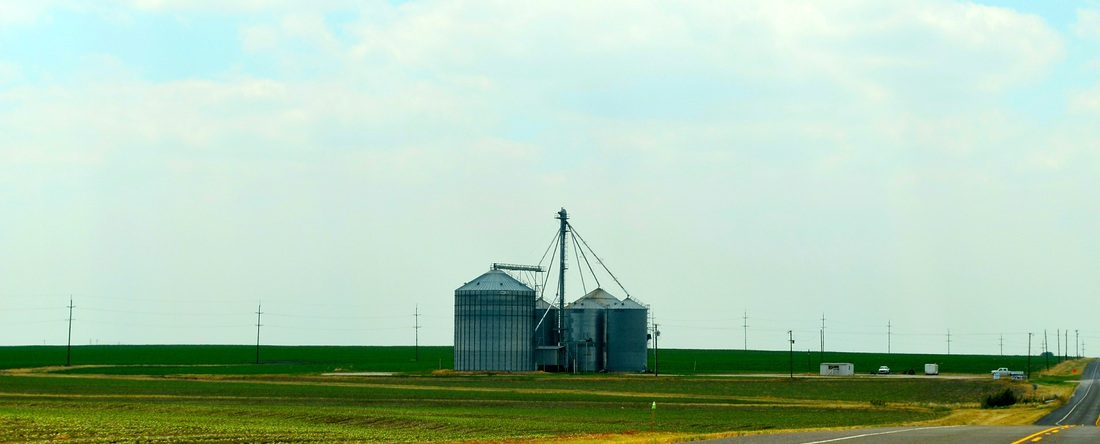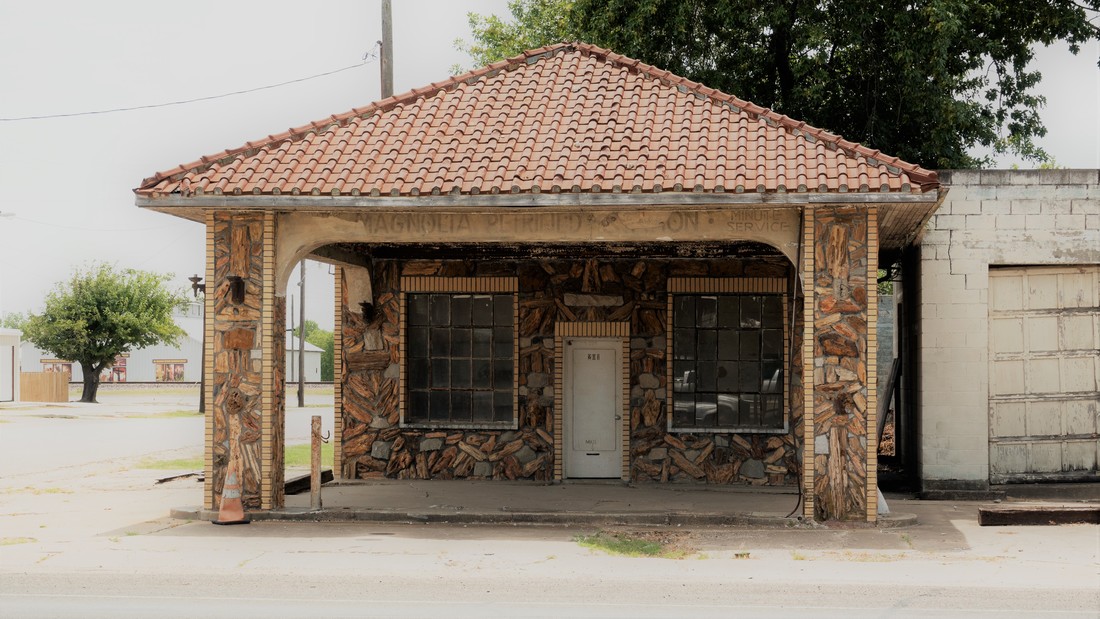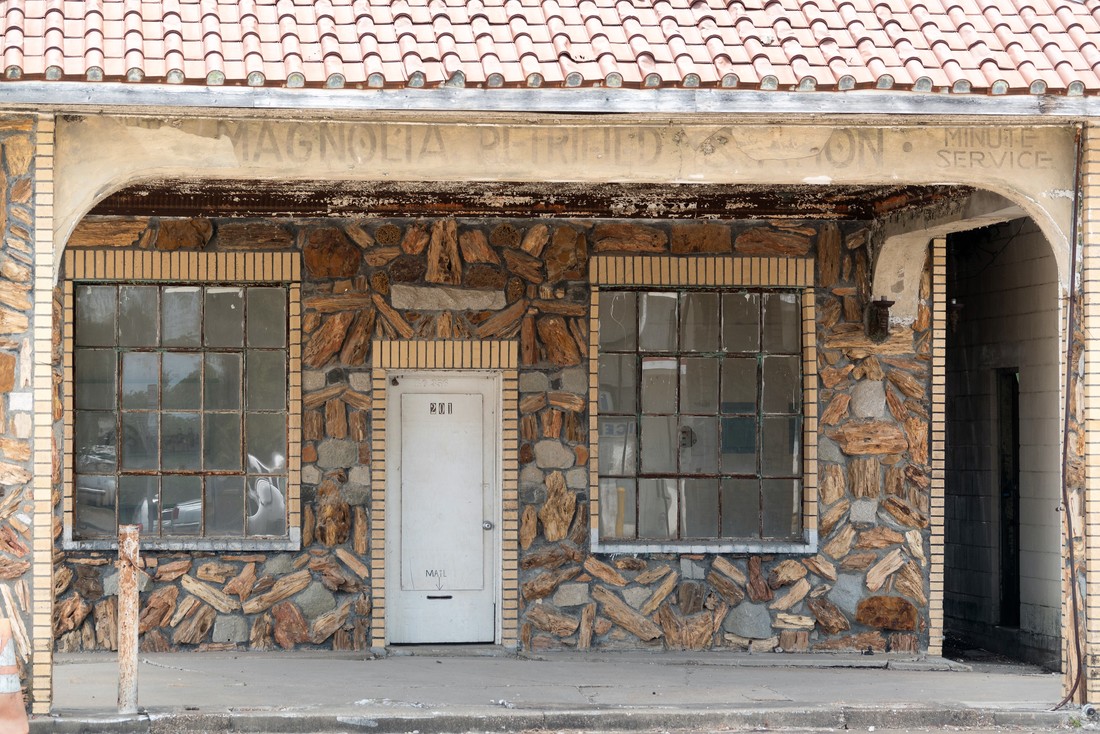137 of 254 Hill County Courthouse, Hillsboro, Texas. County Population: 35,089
|
"In an effort to stimulate land speculation, army doctor Josephus Murray Steiner and Elijah Sterling Clack Robertson, son of Sterling C. Robertson, devised a plan to divide Navarro County. A petition was circulated on September 19, 1852, to carve a new county from Navarro County. Things moved quickly as Governor Peter Hansbrough Bell called a special session of the legislature to deal with frontier problems; a bill to divide Navarro County was signed on February 7, 1853. Hill County was named for Dr. George Washington Hill, who had served as President Sam Houston's secretary of war and who had been elected to the state legislature from Navarro County in 1851.
"A special session of the commissioners' court was called on August 23, 1853, to select the county seat. Thomas Steiner, John Caruthers, and Jonathan Newby offered to donate 260 acres as the county seat; their offer was accepted. Another special session was called on September 24 to survey the town of Hillsborough; town lots went on sale November 1. C. N. Brooks, the county clerk and justice of the peace, built the first courthouse, which was twelve feet square and consisted of elm poles around a dirt floor. A second courthouse was built in 1854, at a cost of $200. In the same year, post office rules changed, and the town's name became spelled as Hillsboro." Kenneth E. Austin, "HILL COUNTY," Handbook of Texas Online |
I visited Hill County and photographed the courthouse in Hillsboro on Saturday, April 28 and Sunday, April 29, 2012.
Hill County Courthouse 1890"A Texas version of the Second-Empire style, the Hillsboro courthouse is the tallest building in the county and can be seen for miles when ap-proaching the county seat from any direction. It is placed in the center of a typical Texas courthouee square with landscaped lawn and trees.
"The architect of the Hill County Courthouse was W. C. Dodson, listed as a Waco architect in the 1885 roster of Texas architects. Dodson also de-signed the Hood County Courthouse at Granbury in 1890, a courthouse that is almost identical to that of Parker County at Weatherford which was built in 1885 and was probably designed by Dodson. All three of the courthouses are of a Texas version of the French Second Empire style, all have identical central towers, and are otherwise closely related. "The courthouse is three stories tall with a basement and attics. A tall central tower extends the total height of the building to seven stories. The exterior walls are of ivory colored rusticated limestone with banded dressed limestone pilasters edging all projecting corners, banded dressed limestone columns and bases, and dressed limestone trim around the windows, doors, and cornice." From the National Register narrative This courthouse is also similar to Dodson's 1885 Anderson County courthouse, which was destroyed in a 1913 fire and not rebuilt. On January 1, 1993, the Hill County courthouse was destroyed by a fire. Only the exterior masonry walls remained. The Dallas architectural firm of ArchiTexas was selected to design the reconstruction of this historic building. From their website: "ARCHITEXAS completed a comprehensive post-fire courthouse reconstruction for Hill County in 1997. This ISTEA-funded project set a new standard for historic courthouse restorations and was the catalyst for the establishment of the Texas Historic Courthouse Preservation Program (THCPP)." Rather than bull-dozing the ruins of the historic courthouse and constructing a new building, the citizens of Hill County chose to honor their past by restoring the 1890 courthouse. A very good decision! |
